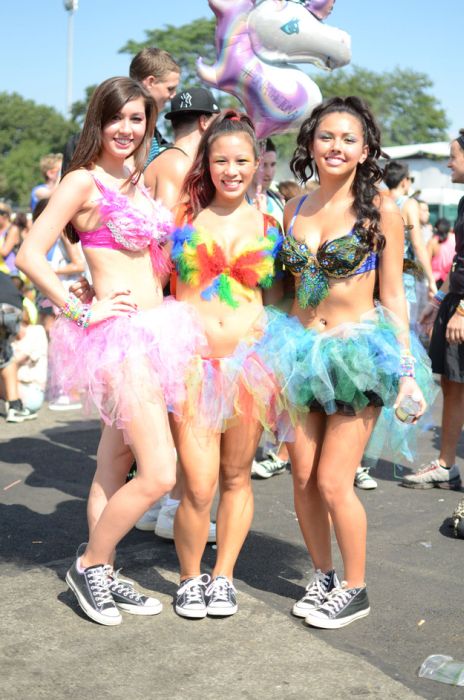|
|
Rave Music Fan Girl
|
This time period saw the rise of the many facets of EDM. Now all jungle raves, or cybertrance, or Breakbeat, or just good house could be enjoyed by anyone willing to go out to any of these parties. Gone were the days of a basement, and red light and a feeling. Now one could pick an upscale club, or a warehouse, or illegal outdoors as many crews sprung forward and blossomed. Promoters started to take notice and put together the massive rave dances of the late 1990s with many music forms under one roof for huge 12 hour events (There was greatly increased prosperity in late 1990s due to the tech boom.). It was not unheard of for as many as 20,000 people to pack Homebase, or 85th/Baldwin for a night of eternal dancing at massive raves. The two major massive rave dance production companies in the San Francisco Bay Area in the late 1990s were Cool World Productions, which produced the Cyberfest and Planet New Year massive rave dances (sometimes with DJ Keoki as a guest DJ), and Clockwork Eventz productions, which produced the Metropolis and Atlantis massive rave dances (featuring DJs such as Ron Reeser (aka DJ Rktech), Jeno, Garth, and many others). SF was now a fabled and much talked about destination around the United States, if not the world. DJs from all corners of the globe played in San Francisco.
The year 2000 saw the beginning of the decline of massive raves as curfews were placed on permits handed out to promoters throwing parties. Instead of all night and into the next day, parties now had to end at 2 a.m. Another problem was that the Oakland fire marshal began doing meticulous fire inspections of the two massive rave dance warehouses near the Oakland Airport. These two largest venues closed down soon after, and there wasn't enough momentum to sustain parties that catered to tens of thousands of people. As if a nail was driven into the coffin of the SF rave scene, the Homebase warehouse that held massive parties from 1996 to 2000 burned down to the ground in a spectacular 6-alarm fire in 2004. Another factor is that in 2003, musical styles changed and many younger people started to listen and dance to electro and electropop music played in small clubs that served alcohol instead of going to large rave dances that played house music with no alcohol. Rave dances also changed back to the new smaller, intimate venues, which continued just like they had from the start and underground raves became the norm in the years after the tech boom of the 1990s.
While San Francisco's crowd attendance and variety of DJs might have peaked, it still maintains a much smaller but dedicated cadre of various crews, DJs such as DJ Joey Tek from Redwood City, promoters and producers. Every weekend, many events are still dedicated to the various forms of electronic music across the greater Bay Area.
In September 2004, the first LoveFest (Love Parade) was held in San Francisco, and it has been held every autumn, winding up with a celebration at the San Francisco Civic Center. In 2010 LoveFest (now named LovEvolution) was put on hold by the city of San Francisco. This was the year of AB77, a law to limit raves by elected official Fiona Ma. While the rave community fought back through legislation, peaceful talks, and petitions there was no luck for any "Massive" in San Francisco in 2010. While AB74 is still on the table, 2011 has brought a new home for LovEvolution at The Oracle Arena.
|
|









